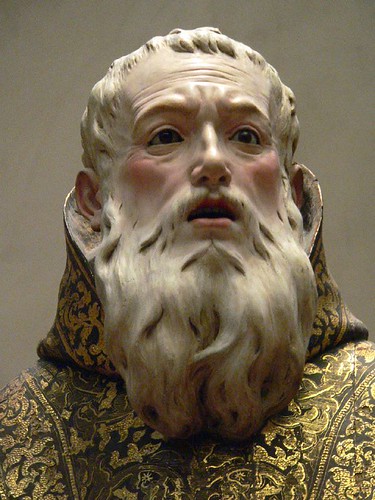
Today on Twitter, the Getty Museum posted a link to a new article and excellent video they produced about Luisa Roldán and how her sculpture of Saint Ginés de La Jara was created. The video is about twelve minutes long and reveals fascinating details of the process.
I was fortunate to have viewed and photographed [Image left] this marvelous sculpture several years ago on my first visit to the Getty. I was astounded by the particularly lifelike depiction of the flesh and veins. I almost expected the saint to look down at me as I framed my image on my camera's LCD screen.
The technique, called encarnaciones, involves applying "thin layers of glue and gesso, followed by a pinkish beige layer of oil paint for the skin and blue to suggest the veins." Painter Tomás de los Arcos, La Roldana's brother-in-law, then applied a translucent coat of pinkish beige oil paint over the figure's veins, and added reddish highlights on the knuckles.
Of course when you enter the exhibit space, the first thing that catches your eye is the dramatic glint of gold on the saint's robe. The painter created the look of genuine brocade using a technique called estofado, in which one paint layer is scratched through to reveal another layer of contrasting color or material below.

Estofado was used extensively in Spain to depict rich embroidery and brocade on sculptures. The statue's garment was covered in gold leaf and painted over with brown paint, then incised in intricate patterns to reveal the brilliant burnished gold underneath.La Roldana evenutally became the court sculptor for both Charles II and King Philip V. Other examples of her work, like the sculpture at right, may be viewed on this Spanish site.
No comments:
Post a Comment